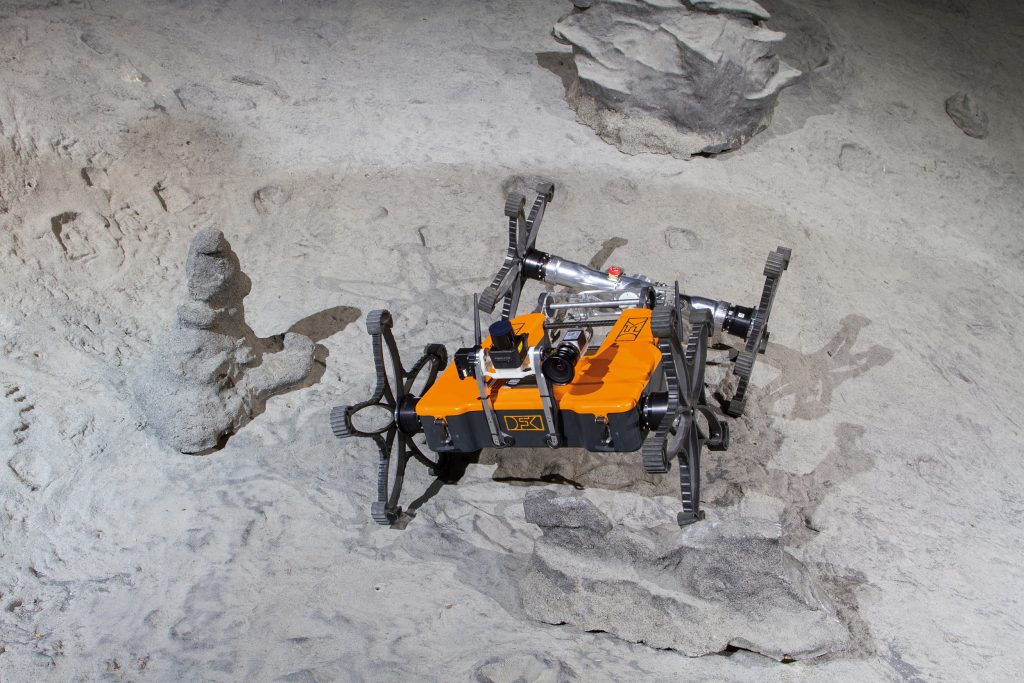How intelligent do space robots need to be?
The Coyote III walking robot is a demonstrator that was developed in the TransTerra project. The
TransFIT project builds on some of the results of TransTerra
Coyote III is a micro-rover that offers signifcant mobility in unstructured terrain. With its internal power supply, on-board sensors and computer, Coyote III is able to complete autonomous exploration tasks. The rover uses its communications equipment to cooperate with other systems. Coyote III is equipped with two standardised electromechanical interfaces that permit the docking of additional payload elements, for instance a manipulator or standardised payload container. Coyote III is light and robust in construction and can carry several kilograms of payload. The rover’s modular design allows structural adaptations to suit specifc payloads.
Coyote III is being developed as part of the TransTerra project, which aims to create a logistical chain, based on a heterogeneous team of mobile and stationary robots. Coyote III will assume the role of shuttle rover to operate within this chain and transport payload modules between the exploration rover and a number of stationary points. Coyote III is a direct evolution of the Coyote II rover, which has already successfully completed testing and use as a micro scout rover.
In addition to its primary deployment scenario – the exploration of extraterrestrial bodies – Coyote III can also be used for earthbound applications – for example in the area of civil security. In this regard, the system is characterised by its compact structure and high mobility. Furthermore, the modular design and the available electromechanical interfaces enable retroftting or upgrading of the rover to suit different mission scenarios.
German Aerospace Center (DLR)
Thilo Kaupisch · E-Mail: thilo.kaupisch@dlr.de · DLR.de/en
